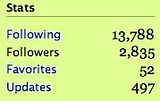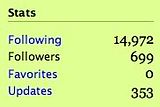 I never realised I was such an auditory learner until I became a podcast junkie. Now I listen to oodles of podcasts on all sorts of topics. My drive to work is a little longer at the new school this year and I’m rather pleased about that since I get to listen to more podcasts!
I never realised I was such an auditory learner until I became a podcast junkie. Now I listen to oodles of podcasts on all sorts of topics. My drive to work is a little longer at the new school this year and I’m rather pleased about that since I get to listen to more podcasts!
Ever since starting my own podcast, The Virtual Staffroom, over a year ago I’ve enjoyed the opportunity to chat with other educators about school, learning and whatever else came up. Initially, the motivation for making the podcast was just to figure out how it was done, and I’ve been lucky to have had so many wonderful teachers offering to join me online for a Skype chat, which then ends up as a podcast.
This week, in somewhat of a role reversal for me, I was invited to be on the interviewee’s side of the mic for a change. I had the great pleasure of being a guest on the Ed Tech Crew Podcast this week, where Darrell and Tony had a chat to me about a bunch of things, but mainly interactive whiteboards. They heard I’d been writing a book on the topic and wanted to have a chat about it. These guys asked some really good questions about IWBs, and I enjoyed the opportunity to have a chat about how I see IWB’s impacting upon education. You can check the podcast episode out here if you’d like. I’ve also been a guest on Jeff Utecht’s Shanghai -based On Deck podcast a few times, where he and Dave chat about educational technology issues as well, specifically centering it around the South East Asian area. And a few minutes ago I just had a Skype chat with Sharon Peters in Montreal who asked if I’d like to join her and the rest of the Women of Web 2 for a podcast in June. We have quite a podcasting ecosystem going on here…
Podcasting is such an amazing medium. I actually live around the corner from the studios of a community radio station and I often wonder about their audience size, and how much expense and infrastructure must be required to broadcast to this audience. I’m sure the audience is relatively small and the overhead required to broadcast to them quite considerable. And yet, here in the podosphere, anyone can potentially broadcast to a much bigger global audience at virtually no cost. All it takes to be a podcaster is a basic computer, some audio recording software, an internet connection, and you can have essentially the same opportunity to broadcast your ideas to the world as any other fully licensed, commercial broadcasting entity.
Forget about technology side of podcasting for a moment and think about what effect it is having on the economics of commercial broadcasting. Sure, it’s not about to put the big name radio stations out of business just yet, but it has the potential to be a truly powerful alternative… this truly is The Long Tail in action, and you really have to wonder how the future of media will look as anyone who wants to have a voice can have one… easily, cheaply and effectively.

 The regularity of my blogging has dropped off a bit lately, mainly because I’m in the middle of writing a book about the use of interactive whiteboard technology for teachers. Although I’ve got almost 20,000 words written so far, I am way behind deadline and really need to get the first draft finished so it can be submitted to the publishers in a few weeks. Until I get that done, every time I feel the urge to blog I have to remind myself that there is a (new) deadline looming and direct my writing efforts to the book instead of the blog. I feel bad that my blogging has been suffering lately, but I really need to get this done. So there you have the reason I’ve not been updating lately.
The regularity of my blogging has dropped off a bit lately, mainly because I’m in the middle of writing a book about the use of interactive whiteboard technology for teachers. Although I’ve got almost 20,000 words written so far, I am way behind deadline and really need to get the first draft finished so it can be submitted to the publishers in a few weeks. Until I get that done, every time I feel the urge to blog I have to remind myself that there is a (new) deadline looming and direct my writing efforts to the book instead of the blog. I feel bad that my blogging has been suffering lately, but I really need to get this done. So there you have the reason I’ve not been updating lately.

